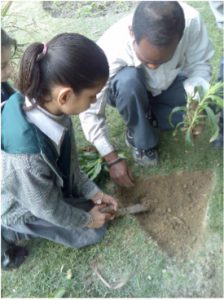Experiential Learning
Experiential Learning is a model for learning experience that shifts away from the classroom practices of short, isolated, teacher-centered lessons and instead emphasizes learning activities that are long-term, student-centered, and integrated with real world issues and practices.
Experiential learning is based upon three assumptions:
a. that you learn best when you are personally involved in the learning experience,
b. that knowledge has to be discovered by yourself if it is to mean anything to you or make a difference in your behavior, and
c. that a commitment to learning is highest when you are free to set your own learning goals and actively pursue them within a given framework.”
Steps of the learning cycle/chakra?
DO: Students, instead of being lectured on a concept, engage in an activity or an experience. To put it simply, they do rather than sit and listen.
REFLECT: After doing an activity, they reflect on their experience. What they did, what happened, what went wrong, what was the reaction, etc. They ponder over their experience.
THINK: Reflection leads to understanding and understanding leads to conceptualization in the mind of the students. They, at this stage, begin to correlate what leads to what.
APPLY: After having understood the concept, students use that knowledge or understanding in their life. For example, after students have studied different types of houses and reasons for them being in a particular manner, they are able to predict the kind of house that an unknown area will have based on climate and region.
PRACTISE: Practise learning in multiple situations. Students use this to increase the depth and breadth of their learning. See what new problems or revelations they have while trying out this learning in newer situations. This reveals the relationship between various concepts and skills.
It also opens up scope for new learning and deepening of understanding.




